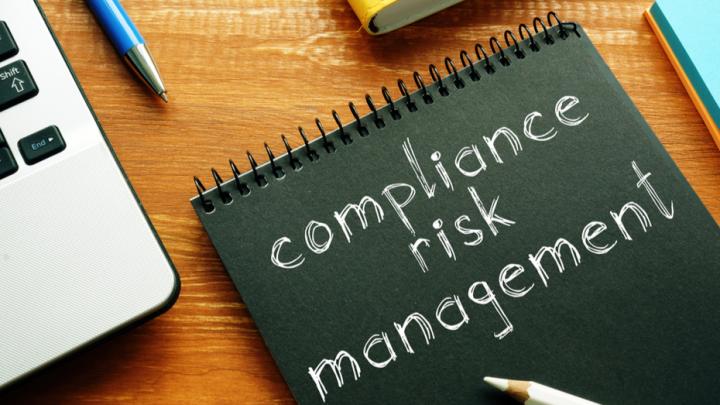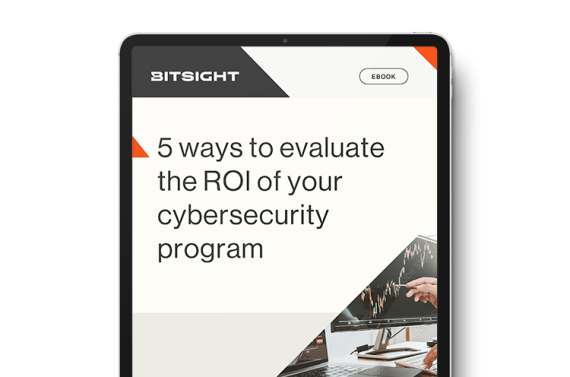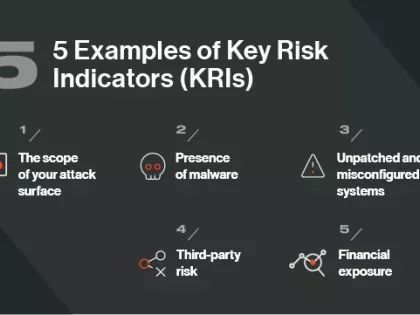Cybersecurity ROI isn’t about cost savings. It’s about how your cybersecurity program helps you achieve your goals while managing risk to a level that your executive team is comfortable with. Learn the five steps to measuring cybersecurity ROI in our eBook.
Compliance vs. Risk Management: How to Achieve Both

Maintaining a resilient cybersecurity program means different things to different organizations. To stay ahead of cyber risks, your organization must maintain a level of risk management—both to protect its assets and be a trusted, reliable partner.
But for some organizations, being cyber resilient is a business requirement. For instance, businesses in the healthcare sector must comply with HIPAA security and data protection regulations. These standards can also be regional, such as DORA regulations in the UK or the California Consumer Privacy Act.
How can you ensure your organization’s cybersecurity program is effectively balancing risk vs compliance?
A key pillar of risk management is continuously monitoring cybersecurity program performance. Indeed, it’s at the core of new cyber resilience policies, like the UK’s 2022 National Cyber Strategy.
Here are three pillars of continuous monitoring that can help your organization balance compliance vs risk management and achieve uniform cyber resilience.
1. Continuously Monitor Your Digital Environment for Vulnerabilities & Weaknesses
Cyber resilience means moving from a reactive approach to security performance management to a proactive one where threats are identified and countered before they are exploited.
An effective way to do this is to leverage Bitsight Security Ratings—an unparalleled cybersecurity data and analytics platform that continuously monitors your security program for risk and the likelihood of a cyber attack.
Using expansive data-scanning technology, Bitsight provides an outside-in view of your organization's security posture and cyber resilience based on risk factors such as misconfigured systems, open ports, unpatched software, and more. Findings are presented as a numerical score (like a credit score), making it easy to convey risks and your organization’s cyber readiness in terms that all stakeholders can understand—at the click of a button. In addition to scoring your risk posture, you can use Bitsight to receive near real-time alerts when a vulnerability or threat is detected for rapid, targeted remediation and improved risk management.
The data-driven insights that Bitsight provides can also help you meet industry standards and regulatory requirements. With cybersecurity frameworks as your guidepost and the continuous insight that Bitsight brings, you can better understand what regulators are looking for and continue to mature your cybersecurity performance.
2. Continuously Monitor the Effectiveness of Security Controls
While Bitsight can help you continuously monitor your digital environment for cyber risk or non-compliance with industry standards, it can feel like the minute you fix an issue, another one arises. Instead of chasing down every alert, the real focus should be on identifying and fixing the underlying root cause.
Bitsight can help with this by analyzing the effectiveness of your security controls. You’ll quickly discover why an insight was triggered, get suggestions as to what the finding indicates, and get automatic suggestions of steps you can take to improve your controls. For example, if Bitsight identifies an expired certificate, you can remove it. You can also instill cyber resilience by implementing a certificate management system that renews and replaces certificates automatically.
3. Continuously Monitor the Security Performance of Third Parties
Whether you're onboarding new vendors or assessing existing third parties, third-party risk management is relentless and time consuming. Yet, it’s a necessary task for ensuring cyber resilience.
Bitsight can help bring efficiencies to the process. By continuously monitoring the security performance of your third parties, you can speed onboarding and keep a finger on the pulse of vendor security throughout the life of the relationship. For instance, instead of relying on traditional questionnaires, assessments, and penetration testing—all of which only provide a point-in-time view of third-party cyber risk, use Bitsight during the onboarding phase to gain immediate insight into each vendor’s current and historical performance (useful for revealing previous incidents or breaches)—without the need for lengthy assessments.
Then, once the contract is signed, Bitsight continuously assesses each vendor for emerging risk and alerts you the moment a new vulnerability is detected. You can then share these insights with the vendor making it easy to have data-driven, evidence-based conversations about risk remediation before a breach happens and any violation of data privacy laws occurs.
Unify Compliance vs Risk Management
With Bitsight’s continuous monitoring technology, you can unify your efforts to manage compliance vs risk management on a single platform and use these insights to make proactive, rapid, and informed decisions to increase your organization’s cyber resilience, ensure compliance with ever-changing regulations, and scale your digital transformation efforts with confidence.



